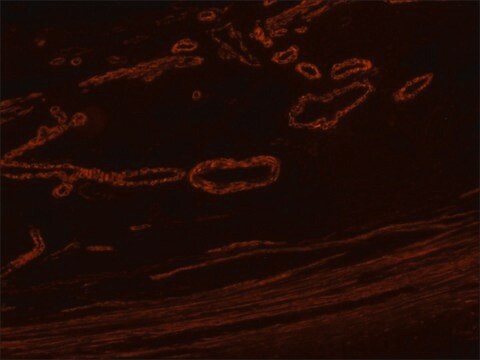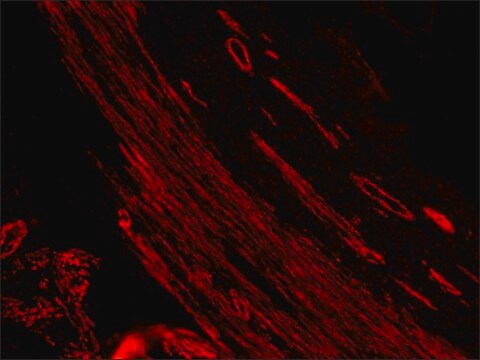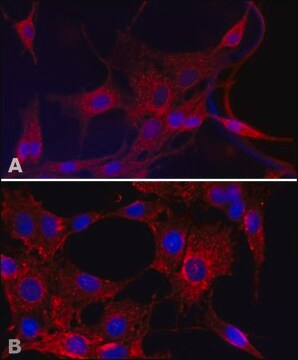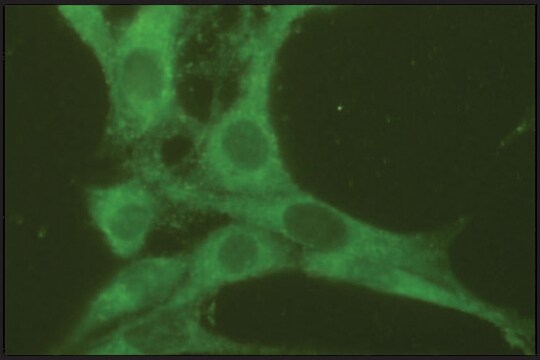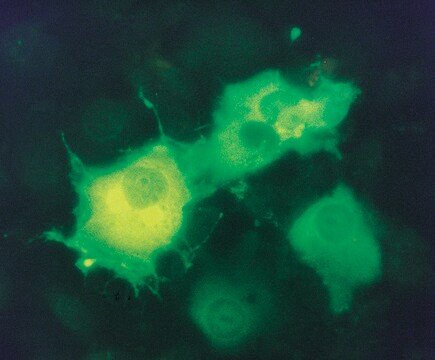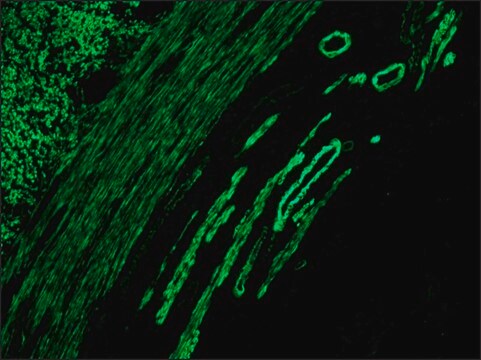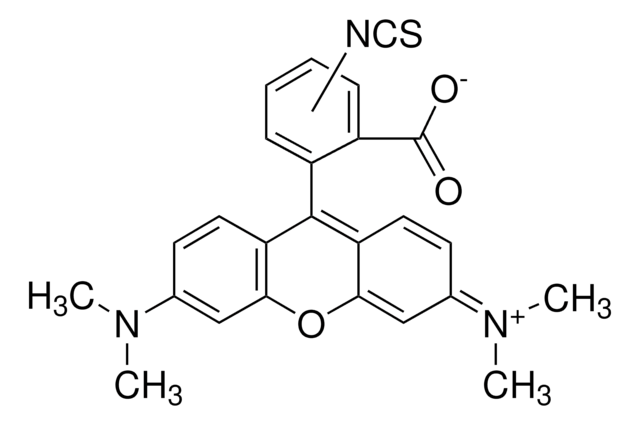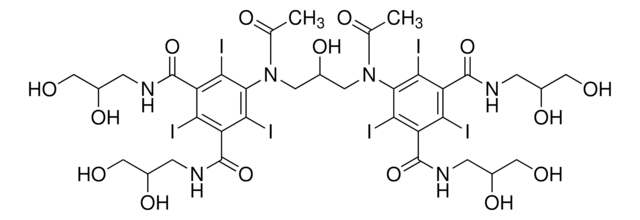T5393
Anti-Mouse IgG (whole molecule)−TRITC antibody produced in goat
IgG fraction of antiserum, buffered aqueous solution
Synonyme(s) :
Goat Anti-Mouse IgG (whole molecule)−Tetramethylrhodamine isothiocyanate
About This Item
Produits recommandés
Source biologique
goat
Niveau de qualité
Conjugué
TRITC conjugate
Forme d'anticorps
IgG fraction of antiserum
Type de produit anticorps
secondary antibodies
Clone
polyclonal
Forme
buffered aqueous solution
Technique(s)
direct immunofluorescence: 1:64
Température de stockage
2-8°C
Modification post-traductionnelle de la cible
unmodified
Description générale
Anti-Mouse IgG (whole molecule)-TRITC antibody is specific for mouse IgG and all subclasses, it cross reacts with mouse IgA and IgM. Antibody purification is by ion exchange chromatography after which it is conjugated to crystalline tetramethylrhodamine isothiocyanate (TRITC).
Spécificité
Immunogène
Application
Forme physique
Clause de non-responsabilité
Vous ne trouvez pas le bon produit ?
Essayez notre Outil de sélection de produits.
Code de la classe de stockage
10 - Combustible liquids
Classe de danger pour l'eau (WGK)
WGK 3
Point d'éclair (°F)
Not applicable
Point d'éclair (°C)
Not applicable
Faites votre choix parmi les versions les plus récentes :
Déjà en possession de ce produit ?
Retrouvez la documentation relative aux produits que vous avez récemment achetés dans la Bibliothèque de documents.
Les clients ont également consulté
Notre équipe de scientifiques dispose d'une expérience dans tous les secteurs de la recherche, notamment en sciences de la vie, science des matériaux, synthèse chimique, chromatographie, analyse et dans de nombreux autres domaines..
Contacter notre Service technique



